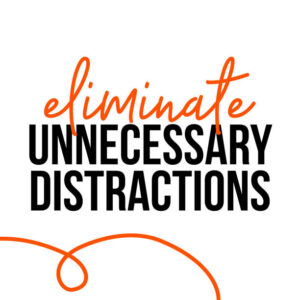it’s a common challenge with ADHD to get sidetracked during tasks like cleaning. The good news is that there are many effective strategies you can use to help stay focused and make the process less overwhelming. Here’s a summary of approaches to minimizing distractions while cleaning when you have ADHD:
Before You Start:
Break Tasks Down: Instead of thinking “clean the house,” list very specific, small steps like “put all dishes in the sink,” “wipe down the kitchen counter,” “gather all trash from the living room.” Micro-tasks feel less daunting and provide quick wins.
Prioritize: Decide what absolutely needs to be done. Focus on the areas or tasks that will make the biggest positive impact on your environment or reduce the most stress.
Prepare Your Space and Supplies: Gather all necessary cleaning supplies before you begin. This prevents you from getting sidetracked looking for things partway through.
During Cleaning:
Use Timers: Set a timer for short bursts of cleaning (e.g., 15-20 minutes of focused work), followed by a short break (e.g., 5 minutes). This utilizes the ADHD tendency for “sprinting” and prevents burnout or getting lost in a task indefinitely. The Pomodoro Technique is a popular method to adapt.
Single-Task Focus: Try to focus on only one micro-task at a time. If your task is “gather all trash,” only do that. Don’t start wiping surfaces until the trash is done (unless you’re deliberately doing a “task batching” approach like “all wiping surfaces”).
Minimize Sensory Distractions:
Visual: Clear the immediate area you are working on. Avoid looking at other messy spots that could pull your attention.
Auditory: Use noise-canceling headphones if external sounds are distracting. Conversely, some people find that listening to upbeat music, podcasts, or audiobooks helps maintain focus by providing a background level of stimulation. Experiment to see what works for you.
Make it Engaging:
Gamify: Turn cleaning into a game. Race against the timer, or give yourself points for completing tasks.
Pair with something enjoyable: Listen to your favorite music or a compelling podcast only while you are cleaning.
Body Doubling: Clean when someone else is present, either in the same room (doing their own thing) or even on a video call. Their presence can provide a sense of accountability and subtle external focus.
“Don’t Put It Down, Put It Away”: As you’re cleaning and come across items that belong elsewhere, try to immediately put them where they go instead of setting them down in another temporary spot. This prevents creating new clutter as you clean.
Use Visual Cues: If you’re doing a multi-step process, a checklist you can physically tick off can help you see progress and remember what comes next.
After Cleaning:
Reward Yourself: Plan a small, immediate reward for completing a task or cleaning session. This positive reinforcement can increase motivation for future cleaning.
Be Kind to Yourself: Recognize that some days will be harder than others. If you get distracted, don’t let guilt derail you completely. Simply notice it and gently guide yourself back to your task or restart with a smaller step.
Finding the strategies that work best for your unique ADHD profile may take some experimentation. Be patient with yourself and celebrate small successes along the way.
DON’T FORGET TO DOWNLOAD YOUR FREE CHECKLIST : Cleaning with ADHD Made Easier Checklist
